Climate change scientists first to drill Everest glacier
- Published
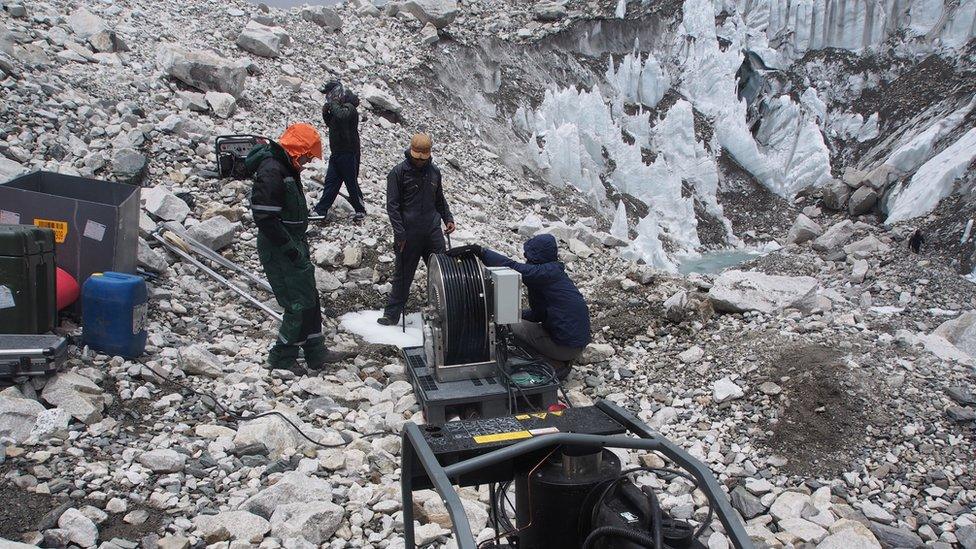
The car wash unit used for drilling produces a jet strong enough to penetrate road tarmac
Climate change scientists from Aberystwyth University and the University of Leeds have become the first to successfully drill through the world's highest glacier.
The group used a drill adapted from a car wash to cut into the Khumbu glacier in the foothills of Everest.
Working at an altitude of roughly 5,000m (16400ft), they spent three days drilling 150m (492ft) into the glacier.
Its internal structure was then recorded using a 360-degree camera.
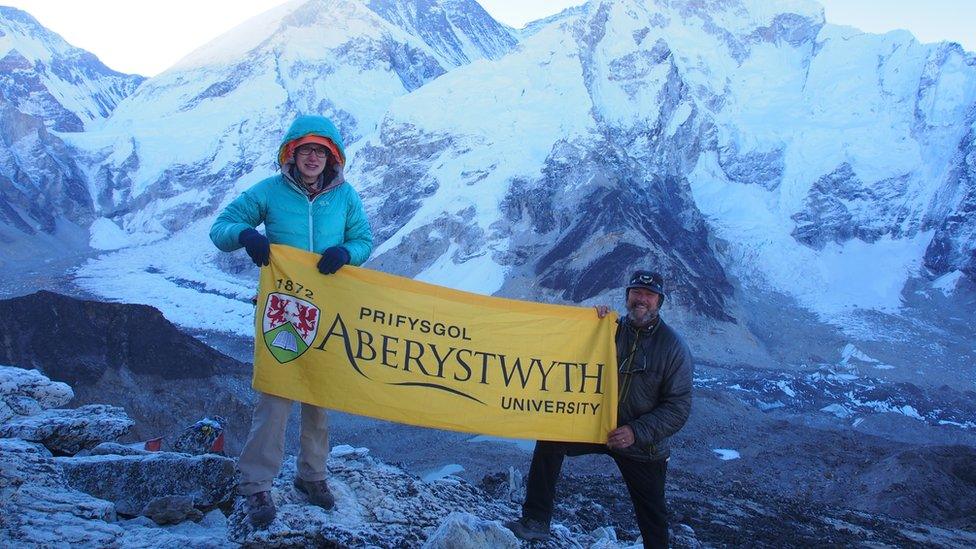
The team are planning a second drilling expedition at to the glacier in 2018
The 10.5 mile (17km) long glacier flows from as high as 7,600m (25,000ft) down to 4,900m (16,000ft) and is often used by climbers on their way to Everest base-camp.
The six-week expedition was a part of the Everdrill project, which is collecting data to understand how the glacier moves and changes over time, and how it might respond to anticipated climate change.
Prof Bryn Hubbard from Aberystwyth University, who led the drilling, said dams and lakes that form on the glacier presented a "real risk" of flash flooding that could "endanger the lives of thousands of people".
He said: "Understanding what actually happens inside these glaciers is critical to developing computer models of their response to anticipated climate change.
"Equally important is developing a better understanding of how they flow so that we can better predict when dams that form on these glaciers are likely to be breached, releasing life-threatening volumes of water to the valleys below."
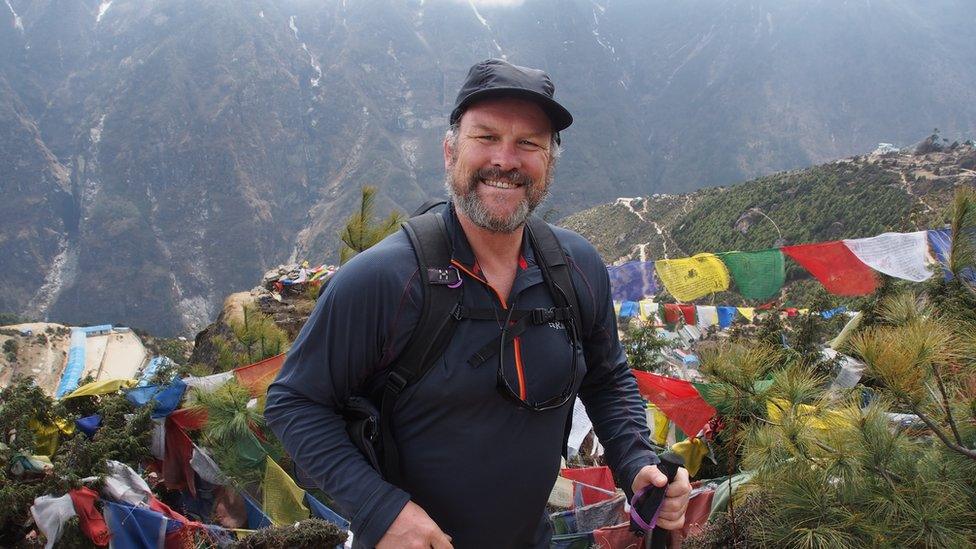
Prof Bryn Hubbard has previously carried out glaciological fieldwork in Antarctica, the Peruvian Andes and Greenland

Data collected will be combined with satellite images to understand more about the glacier

It took the team eight days to reach the glacier
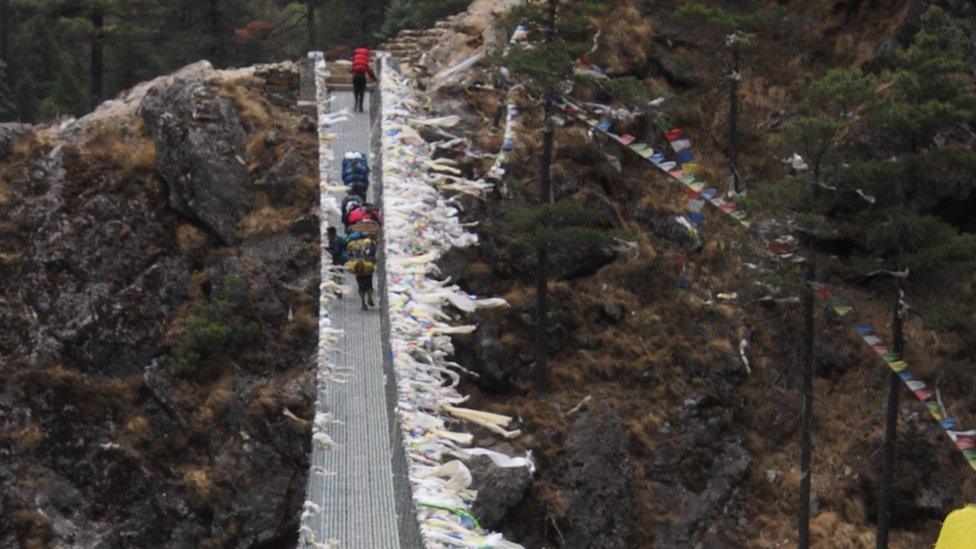
- Published11 April 2017
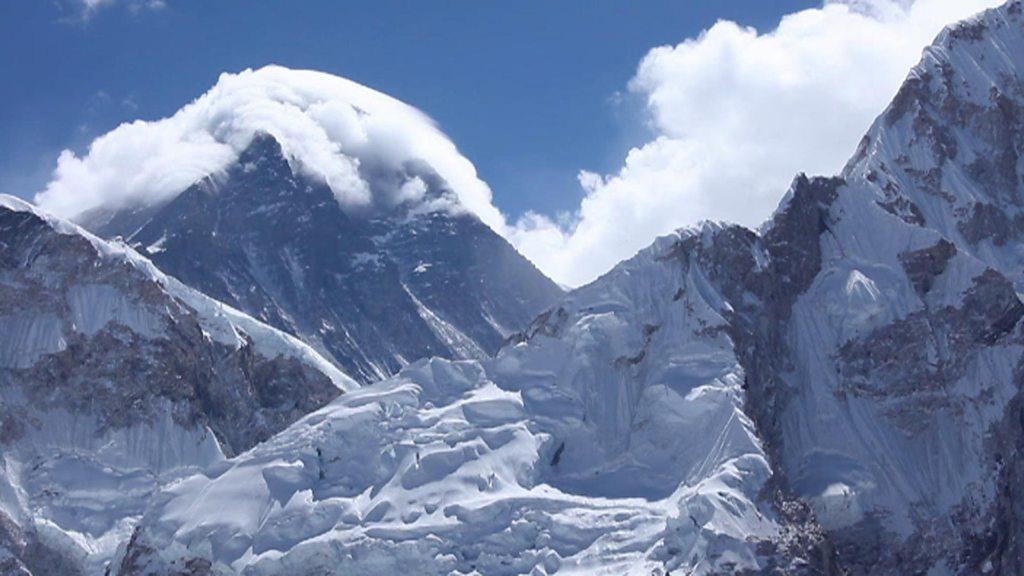
- Published11 April 2017
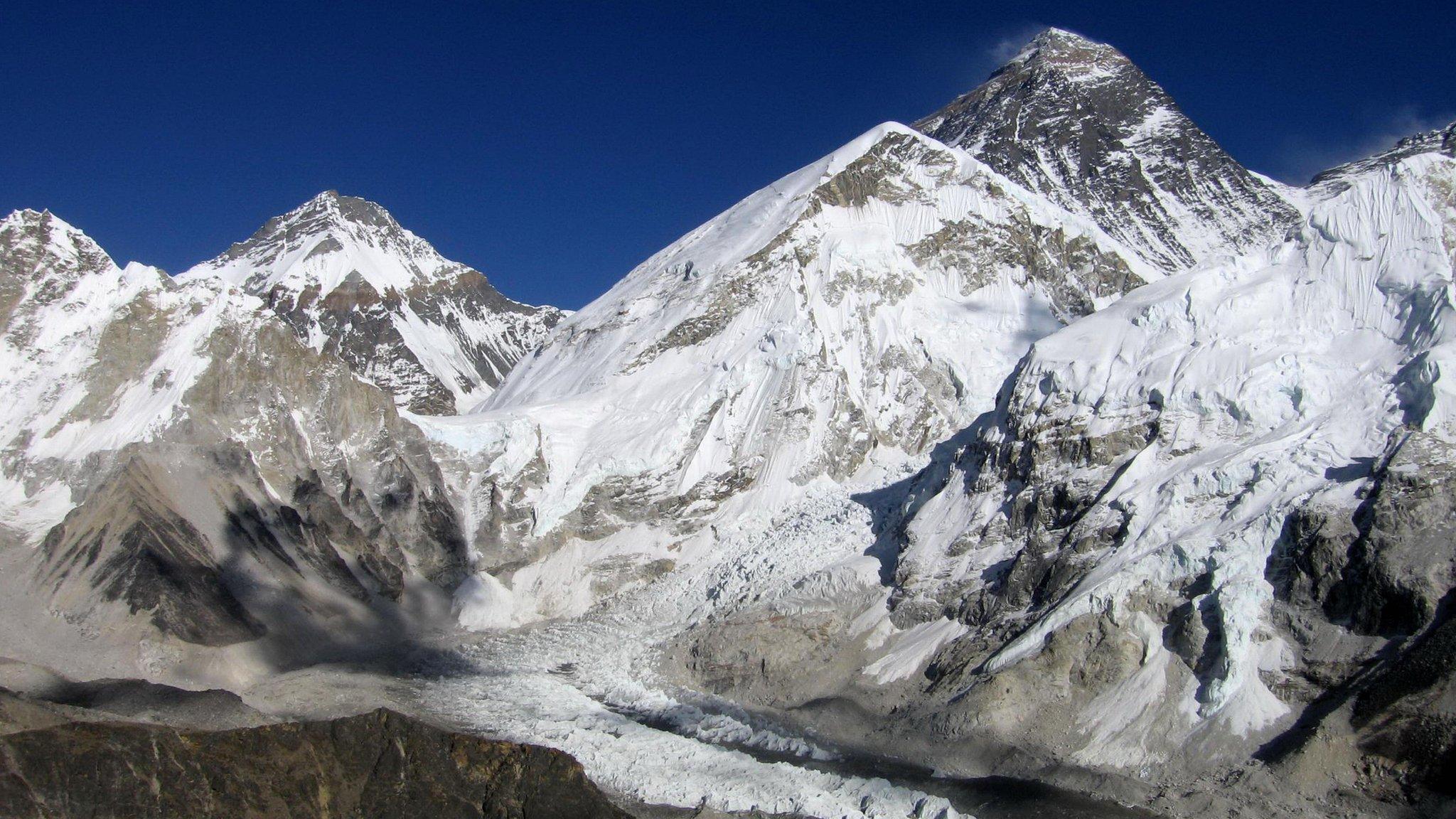
- Published1 February 2016

- Published13 April 2016
